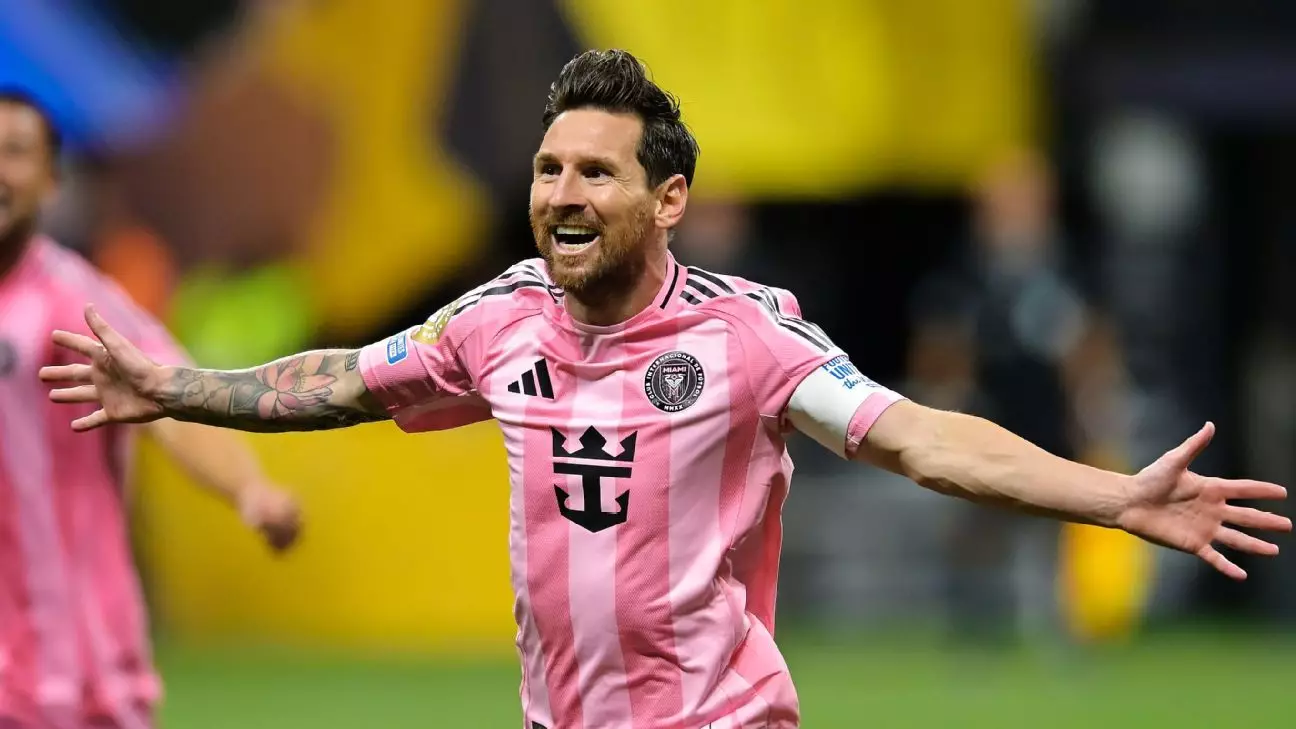In a league where financial prowess often dictates performance and reputation, Lionel Messi continues to illuminate that ethos, establishing himself as the apex professional player in Major League Soccer (MLS) for the second consecutive year. The MLS Players Association’s recently released figures underscore this reality, revealing a staggering guaranteed compensation of $20.45 million for Messi. While the spotlight shines on his playing salary, it’s vital to recognize that this figure excludes potentially lucrative revenue streams—namely his high-profile endorsement deals and strategic revenue-sharing agreements with league partners such as Apple. These financial mechanisms extend Messi’s earning potential significantly, indicating that his financial footprint goes far beyond the pitch.
The implications of Messi’s contract with Inter Miami, reportedly worth up to $150 million over two and a half years, signal not just a personal financial triumph but a radical reinvention of MLS’s global market appeal. His presence in the league has undoubtedly influenced other players’ salaries, reshaping the landscape of compensation and incentivizing teams to reassess their financial offerings. The ramifications extend beyond mere numbers; they craft an aspirational narrative for aspiring players and a tantalizing proposition for potential sponsors.
The Competitive Salary Landscape
As Inter Miami continues to set new payroll standards, the league’s entire financial framework is evolving. Following Messi, the next highest-compensated player, Lorenzo Insigne of Toronto FC, earns $15.44 million, which starkly contrasts with the monumental salary of the soccer legend. The gap between Messi and the immediate competition—illustrated by figures that trail off into single-digit millions—shines a spotlight on the economic disparity inherent within the league’s player compensation structure.
Additionally, a comparative analysis reveals the increasing wealth disparity among MLS clubs. For instance, Inter Miami’s total guaranteed compensation ($46.84 million) dwarfs all but two other teams, indicating a clear dichotomy between the league’s financial heavyweights and those struggling to keep pace. The disparity—evidenced further by Toronto FC’s $34.15 million and Atlanta United’s $27.63 million—could deepen over time, creating a more pronounced divide that potentially stifles competition.
The Changing Financial Landscape of MLS
The overall financial health of MLS appears robust, with the average guaranteed compensation for players rising by 9.22% to $649,199. Furthermore, the median salary increase of 10.1% indicates that while significant gaps exist, a broader upward trend in player earnings is evident. This shift suggests a growing recognition of players’ value, albeit with a clear delineation in earnings potential among top-tier players versus their counterparts.
Amid this backdrop, it’s noteworthy that 131 players now enjoy guaranteed compensation of at least $1 million, an increase from 115 the previous year. This statistic paints a picture of advancing player rights—an evolution fostered through the ongoing Collective Bargaining Agreement (CBA), which outlines crucial terms facilitating both increased earnings and improved labor relations between players and league officials.
Future Implications for MLS and the Broader Soccer Ecosystem
As Messi continues to forge ahead with record-breaking financial achievements, he catalyzes a broader conversation surrounding the pay structures within soccer worldwide. The evolving compensation scenario in MLS reflects not just a trend, but a significant shift in how major leagues can harness star power to elevate their brand value and marketability.
In a world where athletes increasingly utilize their platforms to negotiate beyond traditional contracts—with endorsements fueling their income—Messi’s situation serves as an archetype of what can be achieved when star power meets well-structured financial strategies. Other leagues and sports—especially those operating within tighter budgets—are witnessing this transformation. The pressure to elevate salaries, build more competitive rosters, and enhance brand visibility becomes almost unavoidable.
Ultimately, Messi’s financial success is a beacon of modernization for MLS. It not only highlights the growing appetite for high-caliber international talent but also serves as a template for upcoming leagues aiming to enhance their visibility and commercial viability. As MLS continues its metamorphosis, all eyes will remain fixed on how this financial ecosystem adapts and evolves, potentially reshaping the global soccer narrative.


Leave a Reply